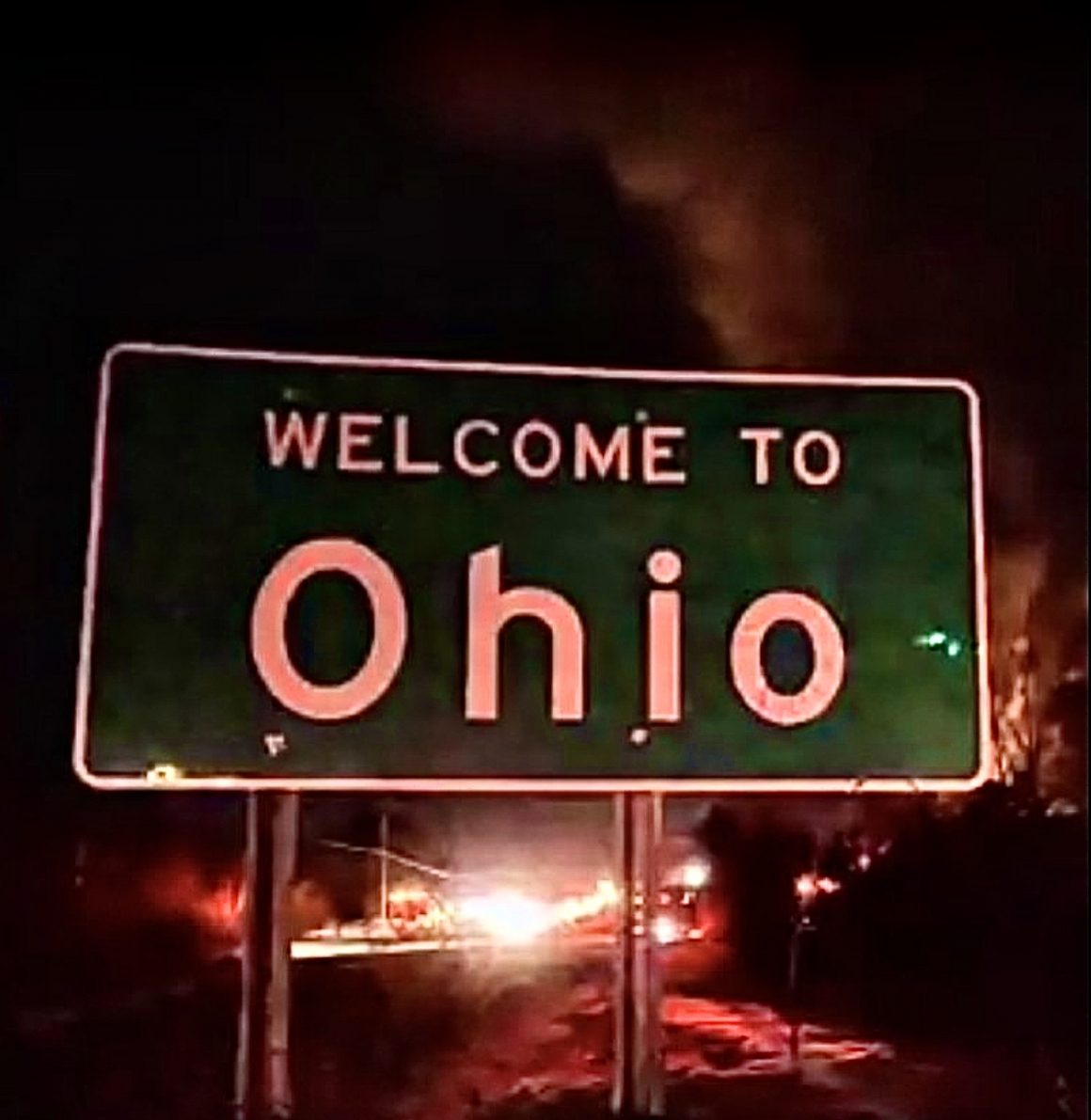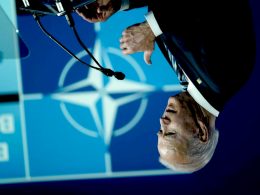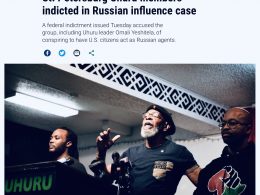The systemic breakdown that our socioeconomic system is creating has the potential to do more than worsen the suffering of the people. Capitalism has survived so long because it’s been able to exploit the crises it creates, to profit off of wars, depressions, pandemics, and environmental catastrophes. Yet in certain instances, these crises have instead produced victories for the working class. World War I made the Russian revolution possible, World War II made the Chinese revolution possible, the living standards crisis that the IMF engineered across the Global South made the formation of many anti-imperialist governments possible. When the capitalists disrupt society, they do so with the risk that the outcome will be not greater profits but an end to their rule.
This is the great hope for America’s working class as they’re subjected to a devastating series of events, brought about by how their government places corporate interests over the people’s safety or survival. This month’s train wreck and chemical contamination disaster, having taken place in a community appropriately named East Palestine, was a crime perpetrated by unaccountable ruling forces upon an underclass. Like the residents of Flint, Michigan, its people are viewed as disposable, their mass poisoning seen as worthwhile to satisfy the plastics lobby that was behind the contamination. In combination with the country’s inadequate rail regulations, the plastics industry has produced an actual explosion of pollution that’s made entire neighborhoods inhospitable; directly because of the leak, residents are getting sick.
Corporate crime and deregulation aren’t even half of the destructive risk factors that have been created by our society’s ubiquitous corporate takeover. The aging of the country’s infrastructure as funds go to waging endless wars, the selling of utilities to predatory companies, the dismantling of social services, the deregulation and consolidation of the banks, the exacerbation of inflation by a proxy war; they’ve all rendered the people without the resources to be able to absorb emergencies. The costs of our crises are multiplied by things as fundamental as our diet, which has been designed to cause mass obesity and thereby contributed to America’s unsurpassed Covid-19 deaths. The country’s role as the center of global capitalism, and therefore the primary arbiter of imperialist violence, is in great part to blame for what will be humanity’s most traumatic and long-term crisis. It’s largely because of the unparalleled institutional polluter which is the U.S. military that global warming has become severe enough to be on track for triggering multiple climate tipping points.
These events are the parts within one big crisis, the capitalist crisis. It’s the logical conclusion of an economic model that was made to function through perpetual growth. Should our society’s collapse advance enough, our government will start having to think in the same terms that countries undergoing famines or total war scenarios have historically had to: who should be allowed to access the limited supply of food, how to maintain order when a large fraction of society isn’t having its basic needs met, how to keep an economy running when keeping a “free market” model will inevitably make the situation untenable? It’s the latter two questions that our ruling class is already having to face. The neoliberal paradigm is producing shocks to society with growing frequency and severity, as well as driving up food insecurity. Should the state’s counterinsurgency efforts against our popular movements fail, these social stressors could lead to revolts that change the balance of class power.
As long as the state can keep doing what it did during the 2020 George Floyd uprising, and sufficiently neutralize mass movements, the ruling class can keep its system alive by furthering the capitalist contraction process. But this requires forcing ever larger numbers of people into the economy’s peripheries, de-proletarianizing them or driving down their wages through further inflation. As well as advancing the police militarization, infrastructural decay, and environmental destruction which inflame the people’s discontent. The decisive factor behind these developments producing a revolutionary scenario, rather than another mass outrage that goes nowhere, is a party that can lead the people to victory. Whose cadres have trained, organized, connected with the people, and spread proletarian education enough to be able to defeat the state.
Co-optation by the Democratic Party, anti-communist psyops, and infiltration of organizing spaces are at present the primary means the state is using to try to prevent revolutionary politics from growing that strong. They’re the optimal counterinsurgency tools, because should they become insufficient at stopping the rise of revolutionary organizing, they’ll have to be substituted with the inflammatory options of police repression and civil liberties crackdowns. In a situation where wealth inequality is at its highest in the last hundred years, and the foundations of our social system are breaking, it wouldn’t be sustainable for the state to enter into a war with its own people. The social unrest that the state seeks to end would simply continue to escalate, like how it has in Peru in response to the coup regime’s massacring anti-imperialist protesters.
The factor that’s making Peru’s situation ever likelier to happen in the USA is the insistence by our ruling class to maintain the neoliberal model. In terms of keeping stability during the climate crisis, the state’s best long term option is to transition into a war economy, like the kind the UK had during the Churchill era. Implementing a centrally planned economy was the only thing that could keep Britain from collapsing, and in the case of the climate crisis, states will need to go even further by making the de-privatization permanent. The states that don’t do this will face the same fate that Ukraine now is: a breakdown of governance and a huge loss of economic strength, due to the country’s continuing to further privatize during a total war scenario. Ukraine has shown that keeping neoliberalism during a sustained emergency equates to ensuring one’s future as a failed state. The pandemic has also proven this rule of a privatized economy being national suicide during a crisis. Whereas China’s dictatorship of the proletariat has avoided what would have for it been millions of Covid deaths, and has kept its economy relatively strong, highly neoliberalized countries like the U.S. and Brazil have had some of the most death and dysfunction.
The reason our ruling class clings to the neoliberal model is that at this stage in the decline of the rate of profits, the system is too weak to afford anything other than perpetually intensifying war against the working class. The raising prices, longer working hours, and disappearing public services that working people keep being subjected to are necessary for keeping profits up in a post-70s stagflation crisis global economy. In accordance with the dialectic of historical development, where opposing forces react to each other proportionally to how much impact their counterpart has, the forces of class struggle are increasingly working to create a new model. One that doesn’t have to exclusively function in the form of a downward spiral, like capitalism does.
China is de-liberalizing, countries like Mexico and Chile are dismantling neoliberalism by the mandate of their labor movements, and countries like Venezuela and Cuba have not gone so far as to implement neoliberalism during their recent economic compromises. Peru’s return to the imperialist-preferred model has represented such an affront to the people’s material interests that the people have effectively withdrawn their consent to be governed. The extractive global order that American capitalism depends on is in decline, incrementally being replaced by China’s equitable new developmental program for the peripheral countries. That’s why the failure of the Russia sanctions represents a defeat for neoliberalism by extension: because Russia can’t be destabilized, U.S. hegemony and its exploitative global arrangement can’t survive. This gain for the class struggle applies to both sides of the conflict, because strikes are increasing in Russia as a reaction to the bourgeois state’s not protecting workers’ interests during wartime.
When the USA’s class conflict has escalated as much as Peru’s, or even Russia’s, the weakening of infrastructure, supply chains, and economies that our capitalist crisis has brought to most of the country’s communities will represent openings for revolutionaries to deal fatal blows against the system. The methods of systemic sabotage that Che Guevara described in his guide to guerrilla warfare would be made more effective by the destabilizing factors which American capitalism has already created for itself. If Che were here to see the modern state of the imperial center, he would find reasons for encouragement that weren’t present when the empire was at its peak. He was in essence able to predict our situation of great revolutionary potential when he said: “I envy you. You North Americans are very lucky. You are fighting the most important fight of all. You live in the belly of the beast.”
—————————————————————————
If you appreciate my work, I hope you become a one-time or regular donor to my Patreon account. Like most of us, I’m feeling the economic pinch during late-stage capitalism, and I need money to keep fighting for a new system that works for all of us. Go to my Patreon here.








